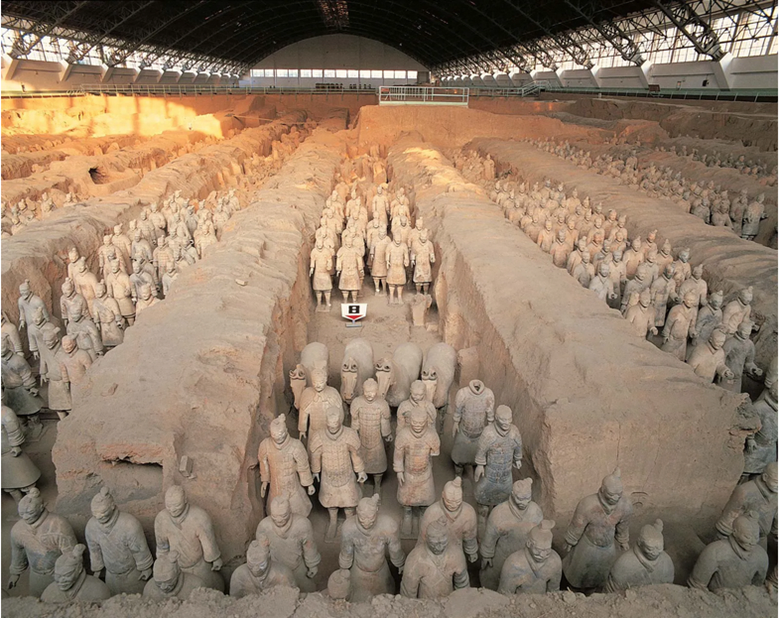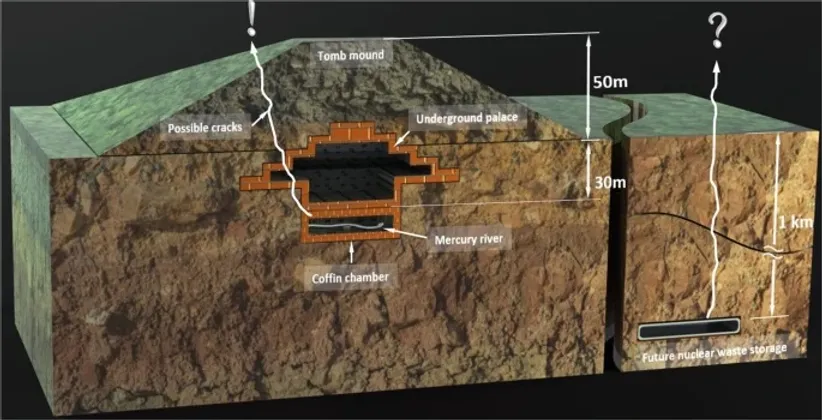Due to its high vapor pressure and prevalence in the atmosphere, mercury makes a good geophysical tracer gas, which has potential archaeological applications. That is why the researchers from South China Academy of Advanced Optoelectronics of South China Normal University and the Department of Physics in Lund University, Sweden recently collaborated to study mercury emissions from Emperor Qin’s Tomb in Xi’an*. This place has been one of the most famous archeological and funerary art sites in the world since its random discovery in 1974.
In 2020, Guangyu Zhao, Weixing Zhang, Zheng Duan, Ming Lian, Ningbin Hou, Yiyun Li, Shiming Zhu, and Sune Svanbeerg published a report on their research with regards to this site. In their study they utilized a mobile differential absorption LiDAR (Light Detection And Ranging) system to measure atmospheric mercury content above three separate spots around the Emperor’s tomb mound. To assess the validity of this process, the researchers used one of our RA-915M analyzers, which is recognized as a conventional mercury vapor monitor used in the large global mercury research community.

Historical Context
Qin Shi Haung founded the Qin dynasty over 2,200 years ago and was the first emperor to unite and rule over all of China. During his reign many believed that mercury, which in Chinese translates to ‘water silver’ (from ‘shui yin’) was the key to prolonging life. It is rumored that the Emperor even may have went as far as eating mercury sulfide or cinnabar as a way of extending his life. According to the ancient Chinese historian Sima Quian, “mercury was used to fashion the hundred rivers, the Yellow River and the Yangtze River, and the seas in such a way that they flowed.**” Their generation believed that quicksilver was a magic potion that would help them both while they were still alive as well as would add value in the afterlife.
Thus it comes as no surprise that Qin would have intentionally found a way of incorporating mercury into the landscape of his tomb chamber in Xi’an along with the famous terracotta soldiers***, horses, and weapons that have been exposed for a while. Since the actual tomb chamber has never been opened due to the necessity of improving methods to safeguard its artifacts from air exposure and swift degradation, the researchers had to hypothesize and estimate the amounts of mercury that would have been introduced there as part of this research project.
Findings and Scientific Significance
The measurements were performed at three different mound locations. Data collected indicated elevated levels of mercury (up to 27 ng/mᶟ) which correlated with previously collected soil sample values. These values were significantly higher than the general mercury vapor level in the area, which was reported at around 5-10 ng/mᶟ. Based on this information, the scientists believe that highly volatile mercury vapor may be leaking through cracks formed in the ancient tomb. As a result, they’ve now proposed using mercury as a tracer gas for valuable ores and geothermal resource explorations going forward. The findings also provide food for thought on potential issues associated with the reliability of long-term nuclear waste sites.

Resources:
* Read the original paper “Mercury as a Geophysical Tracer Gas – Emissions from the Emperor Qin Tomb in Xi’an Studied by Laser Radar” here.
** Read “Flowing rivers of mercury” by Philip Ball here.
*** Read “Top 10 facts about the Terracotta Warriors” by Scott Smith here.

